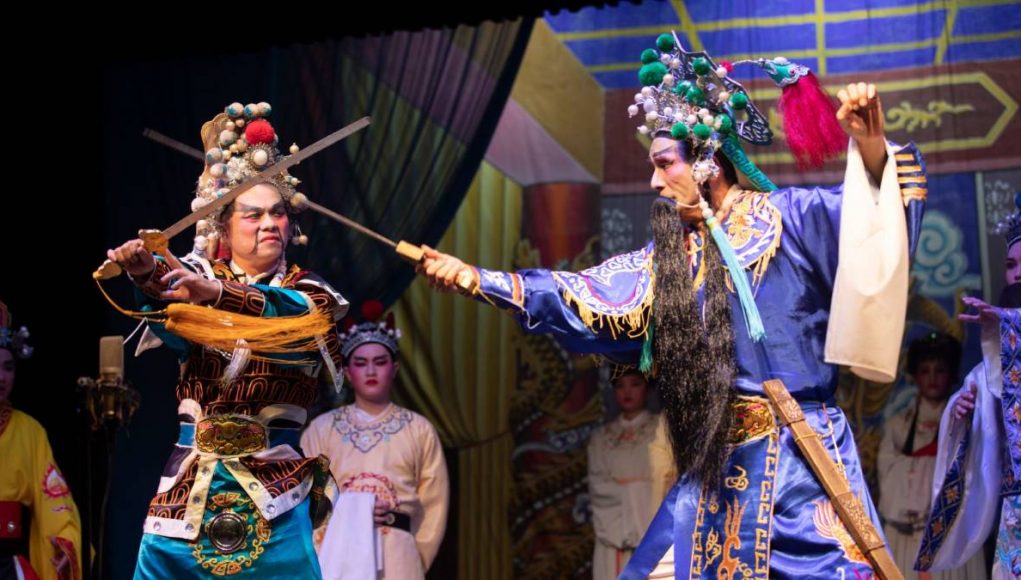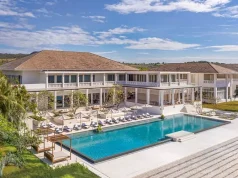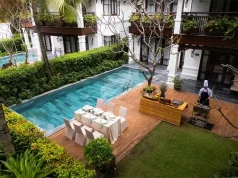Before Cantopop took over their teenage years, many Hongkongers would remember Cantonese opera being the background music to their childhood, seeing as how popular it was among the older generation. Here are some of the best venues and experiences to get a taste of this classic art form and share in the collective memory.
Xiqu Centre
A purpose-built venue for Cantonese opera as well as other forms of Chinese traditional theatre (known as xiqu in Mandarin), Xiqu Centre in West Kowloon Cultural District is the ideal place to visit for an introduction to the genre. Immerse yourself in world-class performances at the Grand Theatre, or sit back and enjoy tea and dim sum at the cosy Tea House Theatre as you take in 90-minute excerpts of all-time favourites performed by the resident troupe. Featuring expert narration, the intimate venue is designed to recreate the down-to-earth experience enjoyed by locals in the 20th century.
Yau Ma Tei Theatre
For a lesson in history and architecture along with your dose of opera, pop by Yau Ma Tei Theatre. Built in 1930, the theatre is the only surviving pre-war cinema building in the urban area of Hong Kong. It closed down in 1998 and reopened in 2012 as a venue dedicated to Cantonese opera. The building’s restoration was faithful to the original, making it an ideal venue to enjoy the richness and colour of traditional Chinese theatre. Inside, the audience sits under the original wooden roof beams.
Ko Shan Theatre New Wing
One of the key elements of Cantonese opera is the exciting action: from weapon-throwing to acrobatics, the martial art-inspired moves captivate audiences of all ages. Expanded in 2014, Ko Shan Theatre New Wing makes for an ideal stage for showcasing the dramatic movements, with high ceilings even in the rehearsal rooms. Following the concept of ‘a theatre in a park, a park in a theatre’, the design, including floor-to-ceiling glass windows, allows the interior features to intertwine spectacularly with the outdoor scenery. The venue also takes into account the needs of the elderly, who are often fans of the genre, by offering greater accessibility such as ample room between seat rows and ramps into the theatres.
Sunbeam Theatre
For the ultimate local Cantonese opera experience, look no further: Sunbeam Theatre is one of the few places in Hong Kong where you can stroll in, grab a snack from the tuck shop at the entrance, and pop into one of the performances held almost every evening. Conveniently situated next to MTR North Point Station, it has been a landmark as well as an opera fan favourite since it opened its doors in 1972. Although it had been rumoured to close a few times throughout recent decades, it still draws a regular crowd and is spoken of fondly by Cantonese performers.
Hong Kong Heritage Museum
Head to The Hong Kong Heritage Museum for an up-close look at the meticulously designed and exquisitely made costumes and props such as embroidered dresses and gemstone jewellery that make Cantonese opera so visually stimulating. The permanent exhibition at Cantonese Opera Heritage Hall features items used by celebrated opera stars as well as multimedia elements, and even a reconstruction of a bamboo stage for a comprehensive taste of the genre. With artefacts spanning the entire 20th century, visitors can get a sense of the art’s development in Hong Kong in relation to the city’s socioeconomic changes.
Cantonese opera’s fleeting theatres
Aside from the above venues and events, Cantonese opera performances also make up a part of the city’s traditional celebrations. For instance, on the birthdays of Chun Kwun and Tin Hau in the third and fourth month of the lunar calendar respectively, locals celebrate by putting up a bamboo stage for opera performances in the neighbourhood of Tsing Yi. You will also find stalls selling local snacks and drinks, ranging from the nostalgic to the innovative.
Chinese Opera Festival
Since 2010, Hongkongers have enjoyed an array of Chinese opera performances, including Cantonese opera, every summer during the Chinese Opera Festival at a collection of venues. With renowned stars of regional art forms such as Kunqu, Yue and Peking opera coming together to showcase their talent, visitors can sample a range of stellar performances while learning about the characteristics of genres from all across China. Experts are also invited to share their insights through lectures and talks. Along with the numerous screenings and exhibitions, as well as opportunities to meet the artists in person, the event offers a comprehensive and in-depth look at the country’s wealth of performing arts and its development.






